In case you haven’t heard, the Global CBDC Challenge is well underway, and here at the Mojaloop Foundation we are thrilled to be a technology partner. The challenge invited submissions for “innovative CBDC solutions to enhance payment efficiencies and promote financial inclusion,” and judges are currently working on selecting a shortlist of finalists to pitch their solutions at this year’s Singapore FinTech Festival in November for the chance to win $50,000.
As a technical partner of the challenge, the Mojaloop Foundation will be providing a sandbox for teams to simulate interactions with last mile DFS providers via instant, interoperable push payment rails alongside CBDC solutions that help ensure the digital divide doesn’t widen by landing funds into accounts that customers already hold and trust.
But before getting more into that, let’s take a step back a bit. At its core, the Mojaloop Foundation is all about financial inclusion, and there are three elements that really matter when we think about financial inclusion and digital payments:
- Interoperability: Inclusive rails ensure that last mile customers can send or spend with everyone in the formal financial ecosystem digitally and cost effectively, no matter where they choose to bank or how old their mobile phone is.
- Instant Push Payments: Push payments that are settled to the recipients instantly build trust, help the underserved budget and let merchants improve liquidity and drive the foundations of economic growth.
- Support for Last-Mile Innovation Ecosystems: Last-mile support is fundamental to delivering real-time, relevant services that are important to those who are currently financially excluded.
The Mojaloop Foundation focuses on last mile infrastructure, and our role in the challenge picked up heavily on the third point here. A big part of our Foundation’s mission is helping DFSPs interact with each other to offer last mile services to customers who don’t have a smart phone. In the retail CBDC context, the challenge is figuring out how to take advantage of enhanced features of CBDC programmability while thinking about how to get a digital coin to the millions of people out there still using basic mobile phones.
Let’s take this down to the village level. Residents of remote villages often lack access to the latest smartphone technology, and new technology takes time to prove itself trustworthy. Residents aren’t familiar with these systems and may be wary about adopting them, particularly if they are introduced by unfamiliar brands, cost extra in personal equipment, require getting used to a new user experience, or only work where there is guaranteed power supply. These groups of people are the ones who need our help the most, and yet it can be very easy to inadvertently leave them behind if design thinking to ground realities is not applied. Our role in the hackathon is to help participants think about how to interact with brands these communities are already familiar with, using accounts and wallets they would naturally choose to store their funds already, and figuring out how the two worlds fit together.
We put our Mojaloop sandbox into the hackathon as a simulation of that village, with four or five banks and a network of 60 fake people registered into the environment. So, CBDC challenge participants can use that simulated network as a test environment to ensure their projects will deliver effectively into last mile infrastructure.
We imagine the sandbox will provide the most value to hackathon participants focused on solutions with the Problem Statement 1:
- Can a retail CBDC system be embedded with additional functionalities beyond a basic transfer of value without requiring users to have smartphones (or other expensive/complex hardware)?
- How might this improve the efficiency and effectiveness of Government-to-Person payment programs in the context of an economy with low levels of digital penetration?
As a technical partner in the Global CBDC Challenge, we’re honored to play a role in helping ensure participants are addressing this critical last mile issue and look forward to hearing from the finalists this November.
Connect with us here to join the Mojaloop community, and be sure to follow us on Twitter, LinkedIn and Facebook for all the latest.
About the Author
Lesley-Ann Vaughan, Director of Product Strategy, Mojaloop Foundation
Lesley-Ann Vaughan serves as the Mojaloop Foundation Director of Product Strategy. She has been working in emerging markets for digital financial service innovation since 2005. She was part of the founding team behind M-PESA. In recent years she has worked for the Bill and Melinda Gates Foundation, CGAP, IFC, Microsoft, Mastercard, Accion Centre for Financial Inclusion, EFInA, FSD Kenya, GSMA, FSD Tanzania, DFiD & UNCDF as a freelance consultant. She is passionate about the potential for APIs to unlock the next generation of partnerships and co-opetition in payments, and what it takes to deliver that well.


